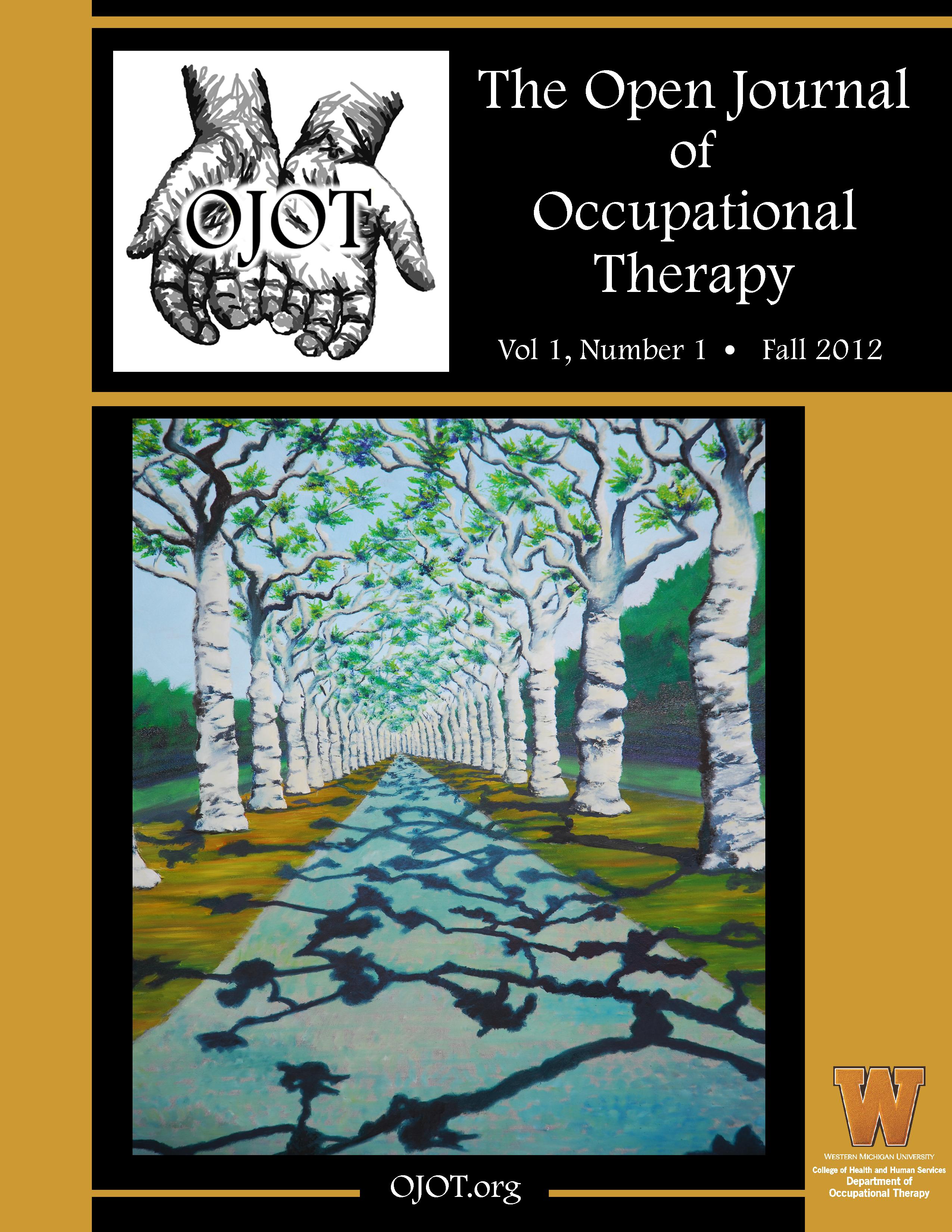ScholarWorks > HHS > OT > OJOT > Vol. 6 > Iss. 1 (2018)
Credentials Display
Lenin C. Grajo, PhD, EdM, OTR/L; Angela K. Boisselle, PhD, OTR, ATP; Elaina DaLomba, PhD, MSW, OTR/L
Abstract
Background: This study integrates research on practice applications of the construct of occupational adaptation with occupational therapy and occupational science literature.
Method: Using Arksey and O’Malley’s 5-step Scoping Study Framework (2005), we conducted a scoping review of 74 articles from five online databases and literature hand-searching and performed quantitative and thematic analyses.
Results: The Occupational Adaptation model (Schkade & Schultz, 1992; n = 74) and the Model of Human Occupation (Kielhofner, 2008; n = 37) were the most frequently cited literature influences. Occupational adaptation has been defined as a process (n = 49), an outcome (n = 37) and both a process and outcome (n = 12) of occupational participation. Four qualitative themes emerged to support the definitions of occupational adaptation from the literature. Occupational adaptation was defined as (a) a product of engagement in occupation, (b) a transaction in the environment, (c) a response to change and life transitions; and (d) a formation of a desired sense of self.
Discussion: Evidence of occupational adaptation as a viable construct warrants further research to operationalize practice and outcomes.
Erratum
Included supplemental material as an appendix instead of as a link to an external resource to improve ease of access to the information.
Recommended Citation
Grajo, L., Boisselle, A., & DaLomba, E. (2018). Occupational Adaptation as a Construct: A Scoping Review of Literature. The Open Journal of Occupational Therapy, 6(1). https://doi.org/10.15453/2168-6408.1400



Comments
The authors report no potential conflicts of interest.